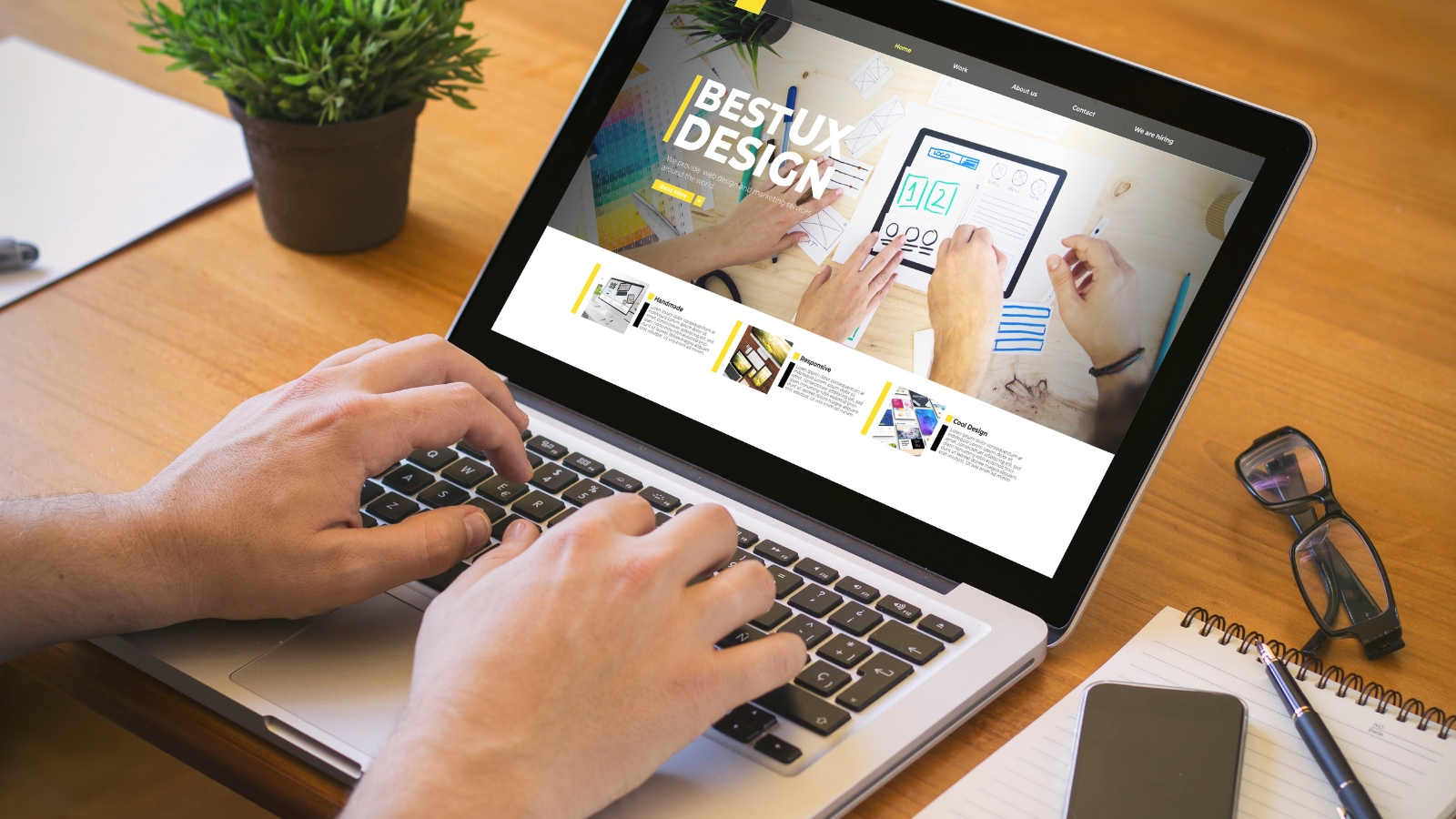Must Follow Design Principles for a Better User Experience
The field of UX design is wide and constantly evolving. Let's go through the essential UX design concepts that will guide your work and enable you to come up with the best user experience for your esteemed clients.
1. Keep The User in Mind (ALWAYS!)
Prioritizing the user is one of the most basic rules of UX Design. Designers must consider consumers' demands and create with them in mind. Even though designers frequently have high expectations and strive to provide the finest appearance and experience, their obsession with perfection might make them impatient with the viewpoint of the user.
The finest UX designs keep the users front and center, thus as a designer, you must put your personal preferences aside. Instead, spend more time learning about the requirements, challenges, preferences, and viewpoints of the client.
2. Context Is Crucial
Your platform's user experience should resemble the development of a plot. They need to be seeking more of it when they visit your website. It's hardly a marvel that social media platforms today claim to have a billion or more users. Even if your platform is in a different genre, it needs a thorough website build-up.
A consistent theme necessitates that your website is simple to use, has engaging product-related tales, and uses color to objectify or fade a point. You will gradually see consistent organic traffic flowing in.
3. Make The Client in Charge
Another crucial step in the user experience design process is giving power to the user. Giving consumers a lot of power over the websites and programs they use was frowned upon ten years ago due to the equally pervasive concern that they would damage them.
But one of the major discoveries of the past two decades of UX research is to provide the user with greater power leads to a better experience. This is a basic principle to keep in mind when offering design or digital transformation solutions.
Not that you should give people complete, absolute power over your web pages. Inexperienced consumers may become overwhelmed by lots of information, therefore no matter how many sophisticated features you offer, your website should still be simple to use.
However, you must be aware that, depending on the type of website you are developing, it will need to function for both power users and the typical user. These more complex choices can be hidden in a different area of your website, but anyone who wants to use them should always have access to them.
Read Also: Improve Your Website’s UX Design for Maximum Conversion Rate
4. The Basic Offering Is Usability
Creating an appealing design is just one aspect of user experience-based design. It needs to be simple to get to as well. Smartphones account for the bulk of sales, and most of them seek simplicity and a focus on the products.
Smaller pages on smaller displays mean fewer things per page, and larger buttons get more clicks. To make it possible to access every piece of information with only one swipe, a drop-down menu is a need.
5. Observe Visual Hierarchy
Designers employ visual hierarchy to communicate the significance of various components within a product. A strong visual hierarchy makes it easier for users to scan an interface gradually from the most important elements to the least.
Examples of this include headlines having a different font size than regular text, or buttons having a different color (primary buttons have a brighter tint).
6. Information Architecture (IA)
The design of a structure for a website, app, or other projects that organize everything for visitors is what information architecture is, in essence. It leads to the development of:
- Navigation
- Metadata
- Sitemaps
- Hierarchies/Categorizations
Information architecture is to assist users in comprehending what they are viewing and locating the information they are seeking for. For instance, a designer is essentially carrying out information architecture when he/she draws up a top-level menu to assist consumers to understand where they are on a website.
7. Understand User Testing in Theory & Practice
Any UX design approach must include user testing as a crucial step. It often entails assessing a digital good or service using a variety of research techniques. UX designers offer their work to actual users and evaluate the results to see how users respond to it.
Designers may watch how actual users engage with their designs once they have been translated into physical prototypes. A/B testing is a popular approach even if there are other options.
Purpose: this enables you to watch user behavior and determine if it corresponds to your design goals.
Users' testing techniques: Among these are card sorting, in-person interviews, uncensored remote usability testing, A/B tests, and session recording, but they differ.
8. Maintain Your Consistency
Users anticipate consistency with the same items they have previously used. The user will interact with the product more effectively the more comfortable they are with it. Since not every component of the user interface needs to be redesigned, it saves the designers’ time & effort. The idea of consistency and a ton of research tells us that, while it may be tempting to try something new, you're usually better off sticking to tried-and-tested routines.
9. Less Is More!
The "less is more" design tenet was initially proposed by architect Ludwig Mies van der Rohe. Putting in a lot of effort to produce more imaginative and beautiful designs might result in inadvertent congestion on the user interface or the finished product. Therefore, it emphasizes valuing simplicity while keeping a particular focus on usefulness and consistency.
If you add pointless jingles to the website, you run the risk of deterring your users from completing the website's final activity, such as making a purchase. The "less is more" philosophy emphasizes simplicity and aesthetics excessive interface adornment.
10. Use a Straightforward Language
It's difficult enough to keep your users engaged during today's frantic web browsing. Your visitors are likely juggling many jobs while swiftly perusing your website or application since they are already busy and distracted by the abundance of choices for the same product.
Using a language that is closest to your user's thought process at this time will help them connect to your design and not ignore it. We don't mean ‘typical’ vocabulary when we talk about terms that are most relevant to your user's concept.
Avoid using jargon in your visual design copywriting and stick to plain language that is easy for your audience to understand and relate to.
It offers additional points for your design's friendliness and is simple to grasp. These five criteria will assist you in deciding how to approach your user design:
- Determine who your target audience is and how they like to utilize design. Examine the disparities in their consumption and the preferred communication methods.
- Consider the typical form of your message that most closely ties to and facilitates the activity of your audience.
- To encourage action, use action verbs rather than ambiguous adjectives. Choose your words carefully and keep in mind the tone of the statement.
- Focus on the typography, layout, and information visuals while creating a design layout.
- Evaluate because it's normal to feel self-assured and partial about your designs and language, have a different team member read the content, and conduct a usability test.
11. Bring Character to Your Designs
Because Gen Z and millennials make up a sizable portion of the current design consumer base, customizing your designs can significantly boost the success of your entire design strategy.
Connecting with a lifeless design, equipment, or code may be difficult for a modern internet user. Therefore, by highlighting a character that appeals to the user persona you are creating and melting the ice between them, personalizing your design will appeal to larger audiences.
12. Typography Has Influence
The number of typefaces and inventive user interfaces available to designers and marketers now for our digital devices is almost limitless.
In a time when designers have access to an almost infinite number of typefaces and inventive user interactions for their digital devices, typography is another important component that has the most constant influence on your UX design copywriting.
The choice of typography in UX designs may affect how the user reads your language, which can either strengthen or weaken the message you're attempting to get over.
Therefore, considering a typographic hierarchy may have a variety of effects on your UX, including greater accessibility and user-friendliness.
Thus, it becomes an important trend to consider while creating your design for the user experience checklist.
13. Mind Web-Based and Mobile Products: A Comparison
The user experience (UX) of a mobile app is drastically different from that of a website. The screen size is the primary distinction, therefore the visual hierarchy and information architecture changes.
For mobile apps, other variables come into play, such as the operating systems and the environment in which clients would use the program.
Create Fantastic UX Designs with TransformHub
You'll notice that the majority of the aforementioned UX design principles stem from the first point we mentioned: prioritizing the user.
The main benefit of UX design methodologies is that they acknowledge a fundamental reality about website creation: your website is for your users, not for yourself.
The construction of a website must be regarded as an iterative web design, in which the user input continually informs the development of your site if UX design can be reduced to a single notion. The greatest beautiful design in the world is useless if your consumers can't utilize it, thus web designers must aim for as close an interaction with their users as they can.
We believe that the likelihood of a user returning to your platform increases if they are allowed the freedom to interact with the items at their leisure.
Let’s Connect
Our skilled team of designers at TransformHub pays close attention to the visual hierarchy, which is formed by considering the size, shape, color, orientation, and motion, in addition to a contextual theme, familiarity, and an emphasis on usability.
We are here to take complete accountability for your business requirements. Counted among the top digital transformation companies in Singapore, we aim to provide you with precisely tailored solutions.
Let’s connect today and together work on creating the best user experience for your esteemed clients.
Share this
You May Also Like
These Related Stories

Improve Your Website’s UX Design for Maximum Conversion Rate

UX/UI Design Trends for 2023 in Product Engineering




